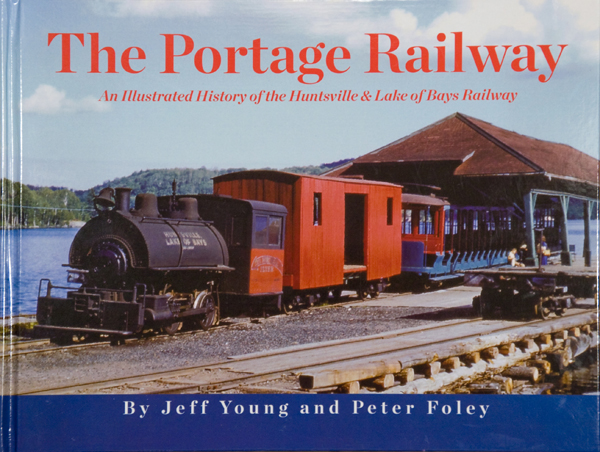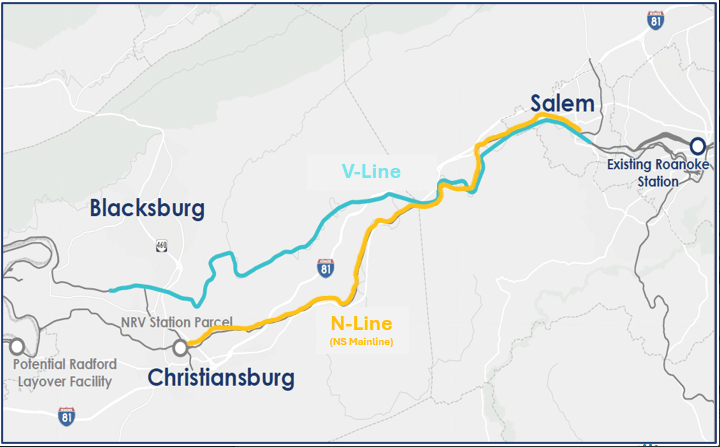by Jeff Young and Peter Foley
Credit Valley Railway Company
2900 Argentia Road, Unit 24
Mississauga ON L5N 7X9 Canada
www.cvrco.ca
12 1/4″ x 9 1/4″; 204 pages, including 10 9″ x 18 1/2″ foldout drawings; hardbound
The Huntsville & Lake of Bays Railway took pride in the fact that it was the “smallest commercially operated railway in the world.” Its mainline trackage, end to end, measured only a mile and a half. It was a portage railway; that is, it carried people and freight between two navigable bodies of water, in this case Peninsula Lake and the Lake of Bays in Ontario, Canada. The railway was completed in 1904 and was in service until 1958.
This book, co-written by our own Jeff Young (“Raising steam”) and Peter Foley, is the most thorough history of this line produced to date. Both of the authors have had an absorbing interest in this diminutive railway for decades and have amassed a vast amount of written material; photos, postcards, and other ephemera; newspaper stories; maps; and physical artifacts that have resulted in a fascinating book about the line.
The railway, originally built to the odd gauge of 3’8 1/2″, was lightly constructed. It began with a pair of Porter 0-4-0T engines, some home-built and second-hand freight cars, and a pair of coaches cobbled together from Toronto horse cars. The Huntsville & Lake of Bays was connected to the Grand Trunk Railway via the steamboat lines. The railway’s heyday started around the time of WWI and continued through 1928. Tanbark, acquired from hemlock trees and used to tan leather, was a major cargo for the line. This industry boomed during the war, providing the railway with much work. Steamboats carrying tourists would deposit them at one end of the line, from where they would ride the railway to the opposite to catch the steamer on the other lake. During this time facilities and infrastructure were upgraded.
The depression hit in 1929 and the railway, along with the businesses that supported it, began to decline. In 1948, the two Porters were on their last legs. The company acquired two used engines, but they were 42″ gauge, not 44 1/2″, as was the railway. Instead of having the engines regauged, they took the extraordinary step of regauging the entire mainline of the railway, as well as much of its rolling stock.
Jeff and Peter have put together a remarkable book. The writing is clear, readable, and entertaining. The book is stuffed with photos of virtually every aspect of the railway, from its inception to its demise, and beyond. Much advertising material, tickets, maps, financial records, passes, and other things of interest adorn its pages.
Each locomotive and all of the rolling stock are described in detail, as are all of the structures associated with the railway. Even the beautiful steamboats that provided the passengers for the line are covered in text and photos. An added bonus for modelers are the 10 fold-out pages at the back of the book. These contain drawing by Pete Foley of locomotives, passenger cars, freight cars, a stub turnout, and structures. Locomotive and rolling-stock drawings are done to 3/8″ scale (1:32), while structures are drawn to a variety of different scales.
This fine hardbound book is printed on high grade, matte-finish paper. Photos are of excellent quality, as are the drawings at the end. Signed copies are available from the publisher upon request.
This well-documented volume would be a boon to modelers who would like to be able to replicate an entire railway. Highly recommended.















The book is great, Marc’s review is very good. The railway can inspire you to build a garden point to point layout with simple rolling stock and small locomotives. Jeff and Peter did a thorough job of investigating the history and operation of the railway. The drawings will make modeling much easier.